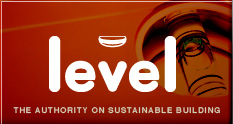Energy
Designing homes to conserve energy and use it efficiently, from sources that cause least environmental harm.
Storage and continuous flow systems
The choice between storage and continuous flow system will depend on a range of factors.
In continuous flow systems, water can be heated using electricity or gas. In storage systems, the water can be heated using electricity, gas, solar energy, a wetback or a heat pump.
Both types have advantages and disadvantages. For most purposes, the most efficient option will be an appropriately sized storage cylinder with water heated using an energy efficient source such as solar energy or a heat pump. However, in some circumstances continuous flow systems may be more suitable. Continuous flow systems can also be used as a booster for solar or heat pump systems.
The decision about whether to install a continuous flow system may be influenced by:
- the energy source used for water heating – some energy sources such as as solar and heat pump will require a storage cylinder
- the space available for installation – a continuous flow system might be suitable if there is no space for a storage cylinder
- hot water demand and patterns of use – if demand is highly variable, a continuous flow system may be suitable
- distance between the water heater and the point of use within the house – a small continuous flow system may be suitable for areas that are remote from the main hot water system.
Operational carbon must also be a consideration today – what systems contribute to a house with a lower carbon footprint. In its advice to Government released in June 2021, the Climate Change Commission recommended that New Zealand phase down use of fossil gas (natural gas) in existing residential, commercial and public buildings and avoid the addition of new fossil gas demand (i.e. by not installing new connections to buildings).
Whichever system is specified, it must meet Building Code requirements and should have appropriate capacity to meet household needs without heating water that is not going to be needed.
Updated: 14 June 2021

